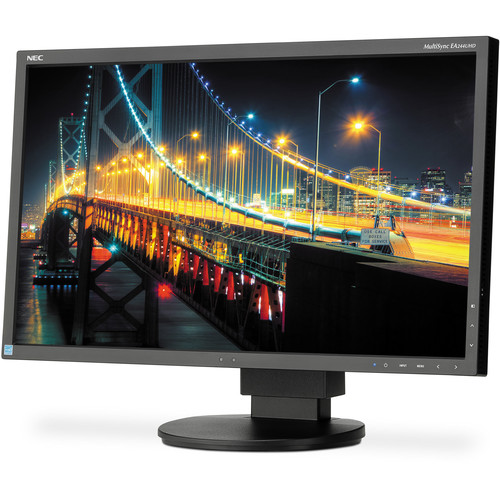
NEC MultiSync EA244UHD 23.8" 4K IPS LED Monitor
I’ve had the luxury of testing NEC’s first ever 4k display for the last few months, so it is with great excitement that I can FINALLY talk about it!

4K resolution (courtesy of Wikipedia)
4k in the computer world is most often 3840 x 2160 pixel (aka UHD) resolution which has twice as many horizontal and vertical pixels as your 1080p (1920x1080) display or TV. There are other resolutions calling themselves 4k. For those without calculators handy, that means 1080p is roughly 2 megapixels whereas 4k is 8 megapixels, so photographers should immediately understand the advantage that 4k has to offer!
Show FOUR different 1080p sources at ONCE on ONE of these displays!
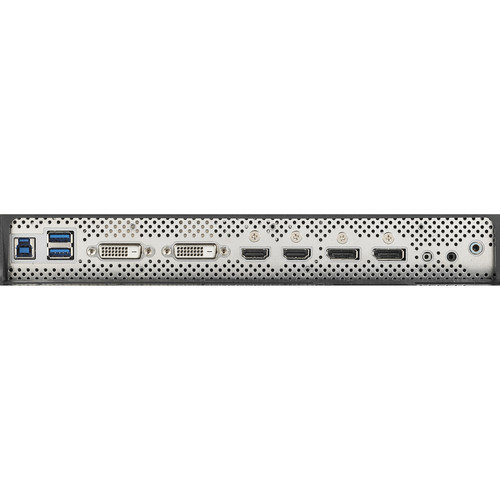
6 discrete input ports can with up four 1080p sources visible at one time
While not super relevant for photographers, one of the needs I have at work is to see up to 4 different computer screens at once. In the past that required four different computer displays, but with this display I can show up to four sources at the same time in full 1080p resolution. Of course you can just show one input source, but if you do have a need to show the input from multiple sources at once (i.e., security cameras, laptop and desktop, old computer & new computer, etc..) it supports or several combinations of up to four from the six digital inputs ports.
Yeah, I know this is geeky so scratch it from your mind if you’ll only be connecting one computer to your display.
4k Video Cards
To take advantage of 4k displays you need a video card or computer that supports 4k. Currently few computers meet that requirement, but you might be surprised learn that if you have an integrated graphics chip like the Intel HD Graphics 4000, 4600, 5000 and up that you system might support 4k output. Most often this graphics chipset is found in laptops and small computers that do not have separate pluggable video cards.
If you don’t have one and you have a big computer then you might be able to buy one of the monstrous, yet wonderfully fast 4k graphics adapters like this one:
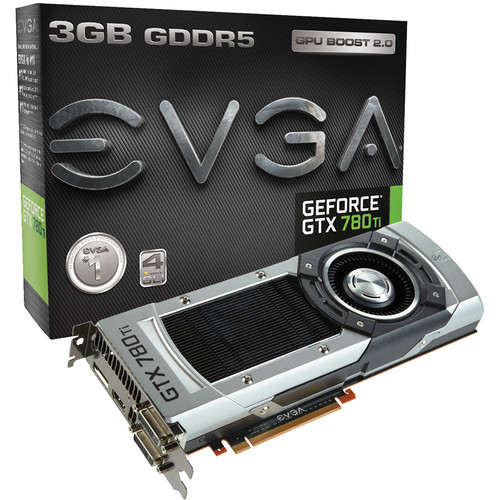
EVGA GeForce GTX 780 Ti Graphics Card
The EVGA GeForce GTX 780 Ti Graphics Card was the video card I used for most of my 4k testing and it was awesome. However it is gigantic so most computers can’t handle cards that large. Click here to see over 600,000 video cards benchmark ratings where this card comes in first in the high end category (at the time this was written), but to also research other cards that are capable of 4k. The key thing to look for are cards that can display a resolution of 3840 x 2160 at ideally 60hz, but 30hz will work.
While I haven’t tested it, in theory this slightly cheaper card should be functionally similar:
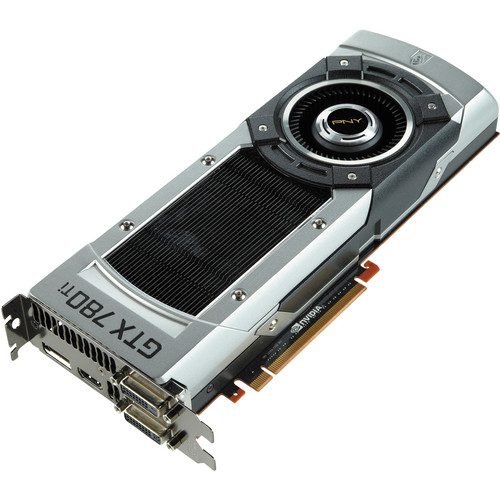
PNY Technologies GeForce GTX 780 Ti Graphics Card
Of course the market has plenty now and many coming that are smaller and cheaper, but I didn’t test any so I can only speak to what I actually have used thus far.
4k on the cheap
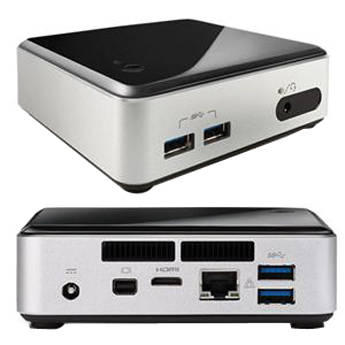
Intel NUC Next Unit of Computing Kit - D54250WYK
This cool little Intel i5 Haswell based PC can drive up to two 4k displays and boot Windows 8.1 in as under 10 seconds with a fast mSata and DDR3L RAM. I’ve loved this so much that I bought my mom one of the larger Intel D54250WYKH1 Mini PC Nuc Kit so I could put both a 2.5” and mSata Samsung EVO SSD (the fast SSD I’ve tested) in at the same time.
Please note that if you buy one of these that you must buy the RAM, SSD and optionally wireless adapter separately. You must also be VERY careful when ordering RAM. It ONLY takes DDR3L (1.35v) and that L is very, very, very important because most RAM is just DDR3 (1.5v). Here’s one example:
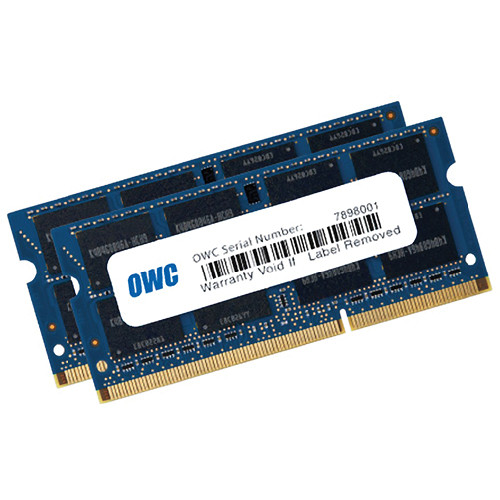
16GB (2 x 8GB) 204-pin SODIMM DDR3L1600 MHz Speed Memory
but I’ve had good luck with Crucial 16GB Kit (8GBx2) DDR3/DDR3L 1600 MHz (PC3-12800) CL11 SODIMM 204-Pin 1.35V.
I’m very happy with the NUC units I’ve tested and the one I’ve purchased for my mom, so if you are looking for a system that has the power of a good laptop in a tiny 4x4” desktop form factor then I highly recommend the Intel NUC! To learn more about the NUC, visit Intel’s NUC home page.
Oh and in case you are wondering, the i5 here is the same generation i5 found in the latest 13” MacBook Pro Retina laptops, but it is a little slower Ghz version.
Conclusion
Because I was using a pre-release model, I couldn’t use my SpectraView software to calibrate this display so I can’t make any comments at this time as to its color accuracy. I can say it does have a gorgeous image though! Ideally I’ll end up with a 4k for one of my displays and my NEC PA series as my other display for my photography workstation.
While I love the NUC, for I’d classify it as suitable for use with Lightroom and occasional Photoshop work. If you are going to do serious photo editing, you’ll want as much computing horsepower as you can afford so that means an i7 or Xeon processor like that found in the Apple Mac Pro. The faster computer and video cards will give you smoother scrolling and zooming as well as faster save and load times. The NUC can certainly handle any Photoshop task and it exceeds the minimum system requirements by a lot. In fact, it is faster than most desktop systems I’ve ever used, but the i5 processor isn’t going to make the most of the background processing features of Photoshop which would be noticeable if compared side by side to a new PC using an i7 or Xeon processor.
Where to order
Click the links or pics on the article to learn more or order any of the products featured.
Other articles you may enjoy
If you enjoyed this article, you may also enjoy these:
- Understanding 10-bit Color by NEC’s Art Marshall
- NEC PA242W Monitor Review (PA241W & PA271W Review)
- NEC PA302W Monitor Review (PA301W Review)
- NEC SoundBar Pro Display Speakers
- NEC SpectraSensor Pro (powered by X-Rite)
- Choosing The Right Display Calibration Device
- Ron’s Photography Gear Recommendations - 2014
Disclosure
If you make a purchase using links found in this article, I may make a commission. It doesn’t cost you a penny more, but it does help to support future articles like this.

No comments:
Post a Comment